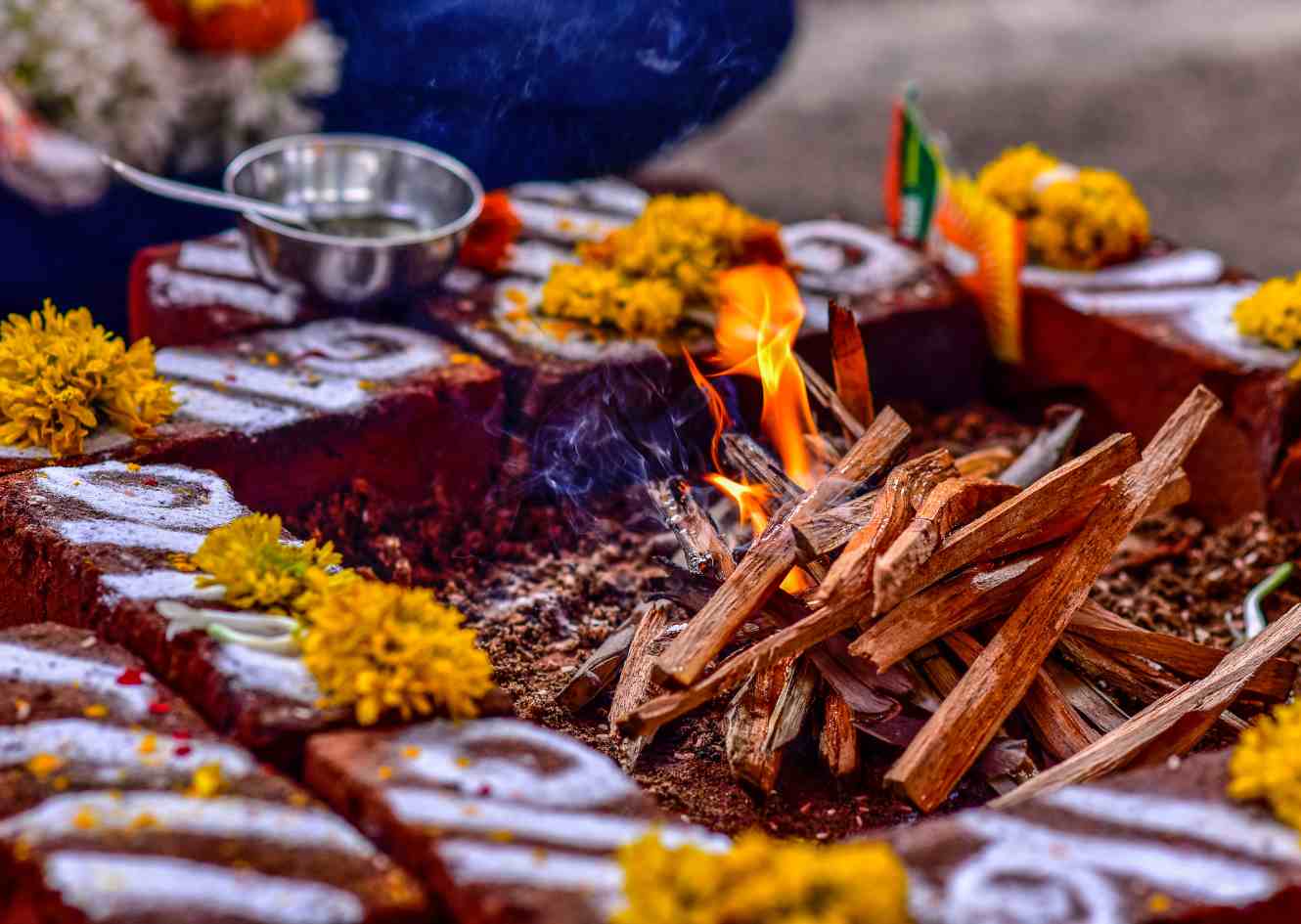Hawan in Sanatan Parampara

In Sanatan dharma, we have different patterns of prayers to gods and goddesses. Some are to be prayed at sunrise and sunset, and others at night. Flowers like roses, lotus, jasmine, and marigold are offered to deities. In hawan “ahuti” is same for all gods and goddesses. This tradition has been followed since the time immemorial of rishis and munis(sages and hermits). The hawan propogates positivity and cleanses the environment. In Sanatan dharma, the hawan is given great importance religiously as well as scientifically. There are numerous benefits of hawan when done at home and in temples.
The tradition of hawan is continued from time immemorial. The description of hawan comes in The Ramayan and The Mahabharat. Praying to god with the use of fire provides us with immeasurable, soulful, positive energy.
Scientific Benefits of Hawan
The smoke that erupts, cleanses, and purifies the air across the area. The material used in hawan, called samagri, is highly beneficial for spiritual and general health. The cake of cow dung is also used in hawan. Hawan has proved to kill 94 percent of the bacteria that are harmful to our environment.
The fire, considered the mouth of gods and goddesses, becomes the medium of offering food to gods and goddesses, called “havishya,” by which ahuti is given. For peace and satisfaction in life, the Hawans are advised for planetary shortcomings; each planet has its own unique pattern of hawan and samagri. Various kinds of hawan samagri are offered to get blessings from gods, including honey, fruits, ghee, wood, til joe, and other articles.
Hawan Wood As Per The Wish
Known as samidha (the wood used in hawan) is used to please the desired planet like Madar wood for Sun, Palash wood for Moon, Kher wood for Mars, Chidchida wood for Budh, Peepal wood for Guru, Gular wood for Shukra, Shami wood for Saturn, Durwa wood for Rahu, and Pusha wood for Ketu. The wood of Madar is used to fight diseases. The wood of Palash is well known for growth and one’s development. Using Peepal wood in hawan is recommended for progeny, the wood of Durva is used for longevity, other gods and goddesses, and for general purpose, the wood of mango, ashok, Palash, and sandalwood are preferable.
Wood According To The Seasons
The wood required for hawan must be from nearby rivers and forests and be pure, dry, termite-free, and fresh.
There are rules for the usage of wood as per season, like
- Vasant ritu-Shami wood
- Summers-Peepal wood
- Monsoon-Dhak /Bilo/Bel
- Sharad ritu-Mango/Pakar
- Hemant ritu-Kher
- Shishir-Gular or Banyan.
Fire has the power to purify. The presence of heat in fire burns away the negativity around. Western researchers have proved that wherever hawans are performed regularly, the air quality is much superior as compared to other places.
The karpoor and hawan samagri produce a religious aroma in the air, which is beneficial for human thinking, behavior, and psychology. Hawan gives immense soulful satisfaction to the family and whosoever attends. The mantras we recite are the postal address on which “ahuti” are to be delivered with every “swaha.” Fire god has the ultimate power to multiply the samagri, which we offer as “ahutis” in hawan kund(pot). There are numerous benefits of hawan. The negative energy of the house vanishes away, and positive energy comes into the place where hawan is performed. It is also being proved that if a person has unfavorable planetary motions against them or any problems related to their stars, they can be avoided by performing hawans. Kundli-related astrological issues can also be resolved.
Health-related benefits are very well known, like smoke emitted remains in the air for a very long time. Ninety-four percent of the bacteria die their own death; hawans thereby help in purifying the environment. Oxygen levels are found to rise in the environment due to the hawans, and coronavirus was not the last or first virus, but all known and unknown viruses can be tackled by Dhawan. Formic aldehyde gas comes out when mango tree wood is used in hawan, which is found to be responsible for killing harmful bacteria and viruses. Rigveda recommends the treatment of patients with hawan who are suffering from diseases of, lung disorders, ear, nose, and throat. The quality of life of such patients improves significantly. The mantra creates positive energy and becomes an energy booster for the body.
For anxious and depressed patients, hawan gives great solace; it purifies the soul. Not only the smoke that is emitted but also the ashes remains of hawan if applied on the forehead or body, are very effective. Hawan provides positive outcomes for houses having any Vastu problem. The five elements in Sanatan Dharm –earth, water, air, fire, and sky require a fine balance that is possible to maintain by hawan.
In India, havan is performed in housewarming ceremonies, marriages, and other rituals.
Hawan Samagri
The leaves, roots of herbs, ghee, milk, seeds, dhoop, and some foodgrains are included as hawan samagri. Other ingredients of the samagri are dry coconut, guggul, agar wood, aonla, buch, tejpat, green elaichi, clove, chharil, haldi, devdar wood, dhavai flowers, dry neelgiri leaves, karpoor, jaifal. Copper pots are advisable for performing hawan.
